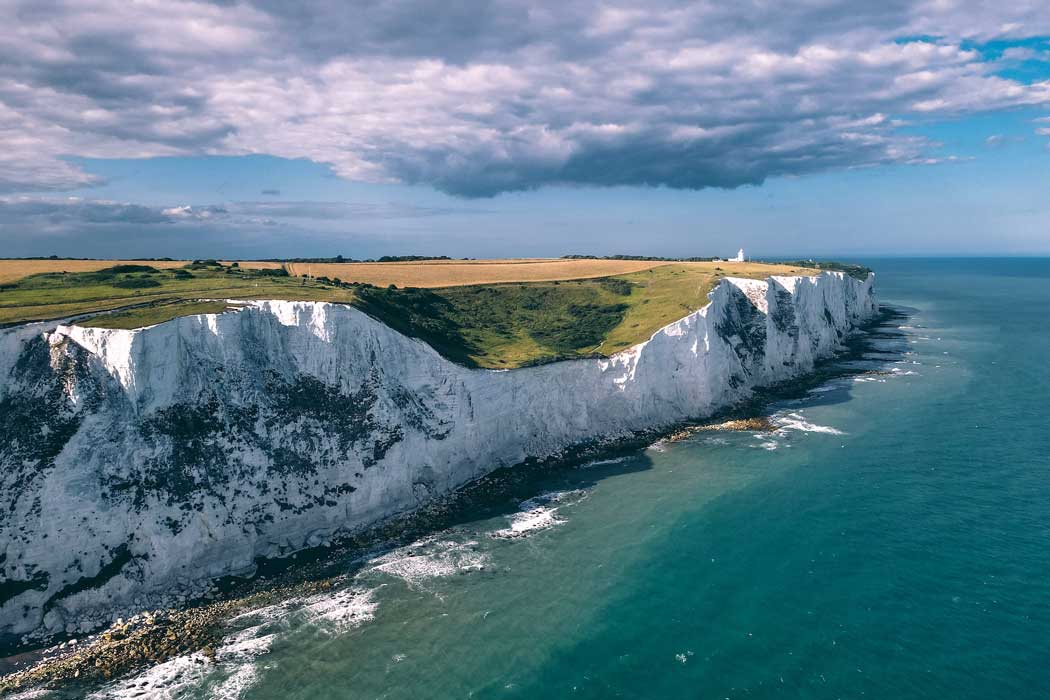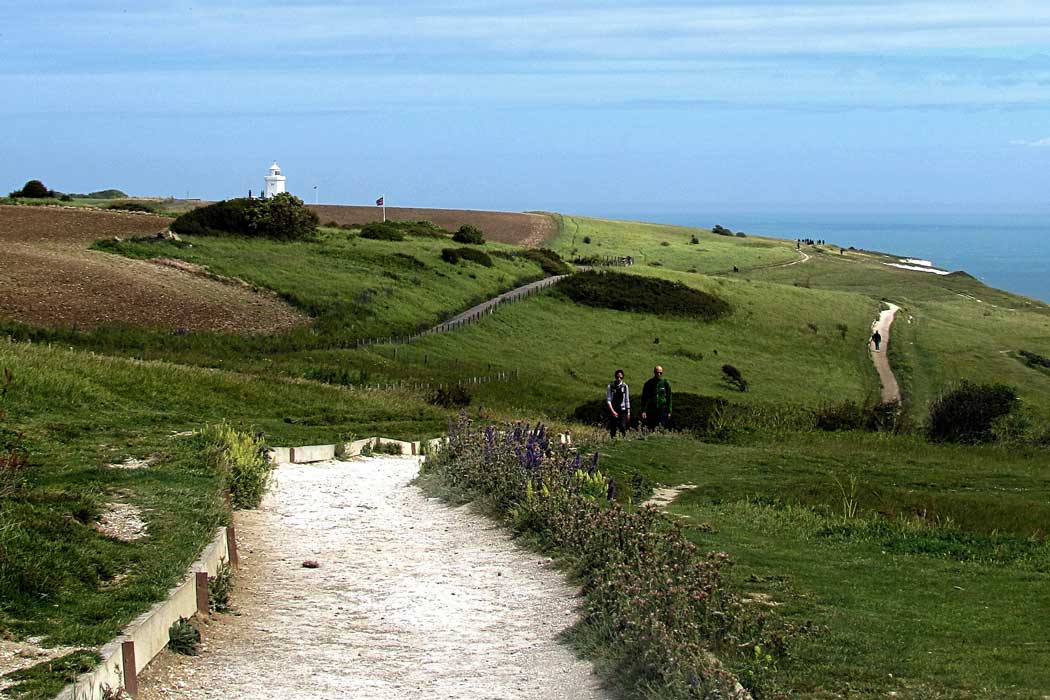The White Cliffs of Dover are one of England’s most iconic natural landmarks. These 110m (350 ft)-tall chalk cliffs stretch for almost 16km (10 miles) along the coast. The cliffs can be seen from France and they are the first sight of England for many visitors arriving in Dover by ferry.
The cliffs are not only a beautiful sight, but they also have played a strategic role in the country’s defence and from the time of the Romans through to the Second World War, the cliffs have been used as a natural barrier against invading forces. During the Napoleonic Wars, a series of fortifications were built into the cliffs to protect against French attacks, and during the Second World War, the cliffs were further fortified to defend against German invasion.
Today, the White Cliffs of Dover are one of Dover’s most well-known attractions, attracting visitors from around the world. Visitors can explore the cliffs by foot, taking in the stunning views of the English Channel and the surrounding countryside. There are also guided tours available, as well as a visitor centre where visitors can learn about the history and geology of the cliffs.
In addition to their natural beauty and historical significance, the White Cliffs of Dover are also home to a variety of plant and animal species. The cliffs are a nesting site for a number of seabirds, including puffins, kittiwakes, and guillemots, and are also home to rare plant species such as the oxtongue broomrape and the early spider orchid.

What to see at the White Cliffs of Dover
The White Cliffs of Dover are a popular natural attraction that is managed and maintained by the National Trust. Visitors can walk along the top of the cliffs and there are also several points of interest along the cliffs that are worth a visit including a visitor centre, the South Foreland Lighthouse and the Fan Bay Deep Shelter.
There are several walks along the top of the White Cliffs that offer breathtaking views of the English Channel and the surrounding countryside. There are several walking trails available, ranging in length and difficulty and some of the trails are wheelchair-friendly, so there is something for everyone. The most popular are the 2km (1¼ miles) National Trust Visitor Centre to Dover Castle trail and the 10km (6 miles) Dover to St Margaret’s Bay walk, which takes around 2–3 hours to complete.

The National Trust Visitor Centre is located above the cliffs, not far from Dover Eastern Docks and has displays about the history and geology of the cliffs.
The South Foreland Upper Lighthouse is a lighthouse built in 1843, which is noted as the first lighthouse to use electric light and the site of Guglielmo Marconi’s pioneering experiments in radio transmission. Visitors can take guided tours of the lighthouse and learn about its history and significance.
The White Cliffs of Dover played an important role in the Second World War and visitors can see the Fan Bay Deep Shelter, which is a series of tunnels that were built into the cliffs during the Second World War to protect against German invasion.
Visiting the White Cliffs of Dover
The White Cliffs of Dover are not well served by public transport; however, they are within walking distance of Dover Castle and the 2km (1¼ miles) footpath from Dover Castle to the National Trust Visitor Centre offers lovely views of the castle, the cliffs and the English Channel.
If you are driving, there are several car parks near the cliffs, including one at the National Trust Visitor Centre. The National Trust Visitor Centre also includes an on-site café, toilets and a gift shop.
It is free to visit the cliffs but there is a £5 parking charge at the visitor centre (free for National Trust members). The Fan Bay Deep Shelter has a £10 admission fee.
The White Cliffs of Dover are not the only chalk cliffs along England’s southern coastline and many visitors to England also visit Beachy Head and the Seven Sisters, a similar cliff formation between Brighton and Eastbourne, around 105km (65 miles) southwest from here.
We may earn a small commission if you book after clicking these links.


There are no comments yet.